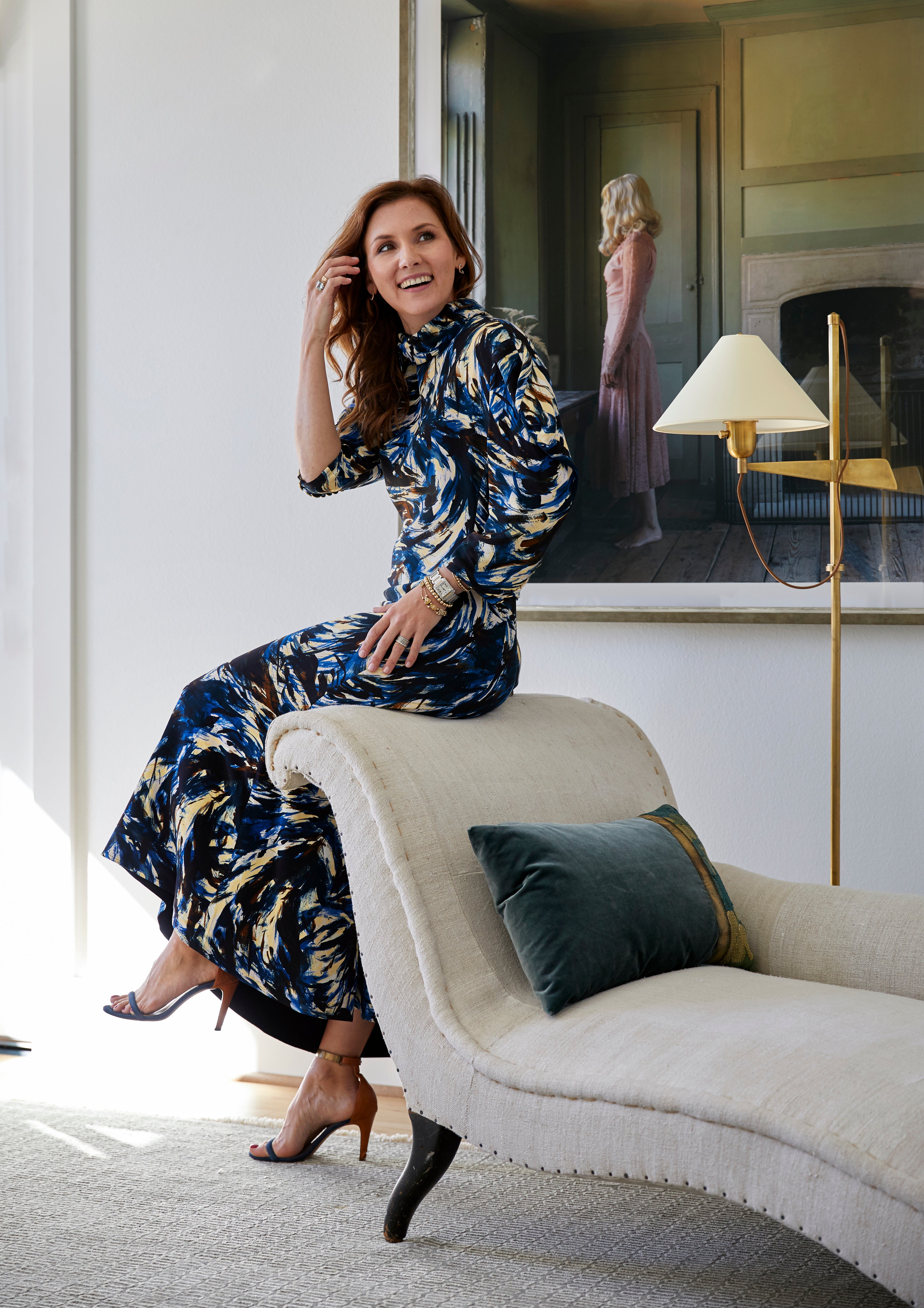Early in Meg Lonergan’s career, at a job with a design firm that heavily valued employees with a design degree, one thing was quickly made clear: Without a formal design education, her opportunities for advancement within the company were limited. The situation was all the more frustrating for Lonergan because she did in fact have an education in design—just not a traditional one.
Her penchant for design began in childhood, under the wing of an aunt who was also a Baton Rouge, Louisiana–based decorator, and whose own home became an early incubator for Lonergan’s taste in interiors. The next installment came in college, though not in the classroom—while Lonergan studied French and political science, she took part-time jobs at antique furniture stores and bedding companies on the weekends, which familiarized her with fine furnishings. Even after graduation, when Lonergan packed up her life and moved to New Zealand to be with her now-husband, she talked her way into an apprenticeship with the owner of a design showroom.
It wasn’t until 2009, when the couple decided to settle down in Dallas, that Lonergan took on the job that appeared to put a cap on her future in the field. Still, after about six months, she’d found yet another method of forging her own way forward—by leaving to take on her first solo project redesigning the new home of her in-laws’ friends. The successful project kicked off Lonergan’s status as a one-to-watch in design, with her very next project landing in the pages of Better Homes & Gardens.
With a growing portfolio, industry recognition and a steady flow of incoming projects, it would seem that the biggest of Lonergan’s career challenges were behind her. Then came the process of building out her team and scaling up her firm’s operations. Despite attempting to cobble together advice from blogs and various business resources, Lonergan admits she had no strategy for taking on new employees. Instead, she hired out of desperation, taking a haphazard approach to onboarding and training.
While the firm got by for nearly a decade on this method, the situation reached a breaking point during the pandemic, when Lonergan realized her team simply wasn’t working. Within a six-week period, she let go of all her employees. On top of that, she realized her work-life boundaries had blurred, draining the excitement out of a job she’d once loved. It was enough to make her consider leaving the business for good.
“I was like, ‘I’m not hiring the right people, and I’m obviously a terrible leader because I can’t keep anyone. But we have tons of work, and the work we do is good,’” she tells host Kaitlin Petersen on the latest episode of the Trade Tales podcast. “It took that dramatic experience to force me to look inward at my own weaknesses to realize that some of this stuff was easily fixed within me.”
Instead of abandoning her career, Lonergan dug deeper. She enlisted the help of a variety of specialists—a business coach, a therapist, a burnout coach and yoga teachers—to help her understand why her team hadn’t been functioning well, and how she contributed to that problem. In this episode, she shares more about the crisis that caused her to reexamine her team-building approach, the pricing model she created to foster a smoother design process, and why a cost-obsessed client isn’t a good fit for her firm.
Listen to the show below. If you like what you hear, subscribe on Apple Podcasts or Spotify. This episode was sponsored by Daniel House Club and The Shade Store.





























